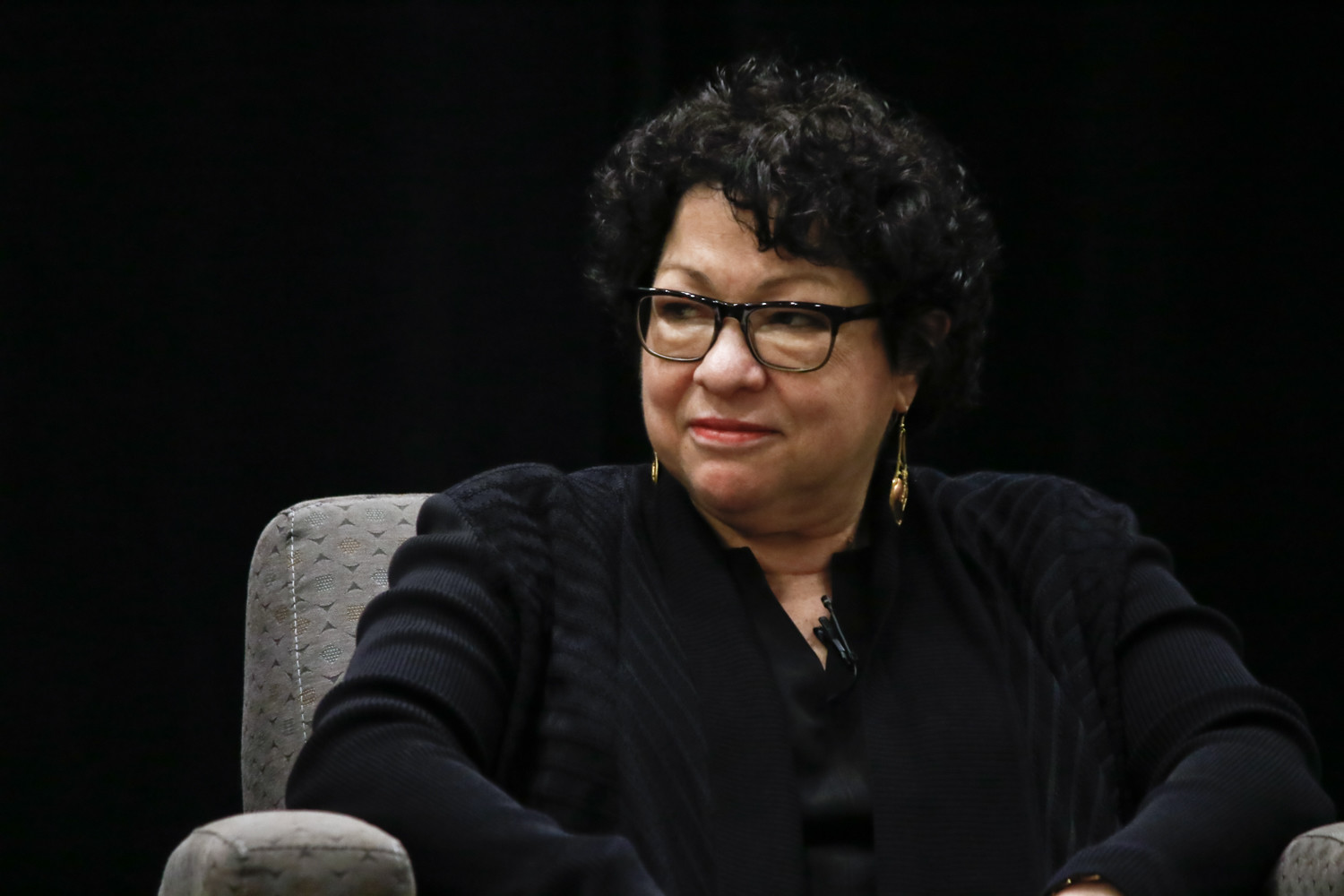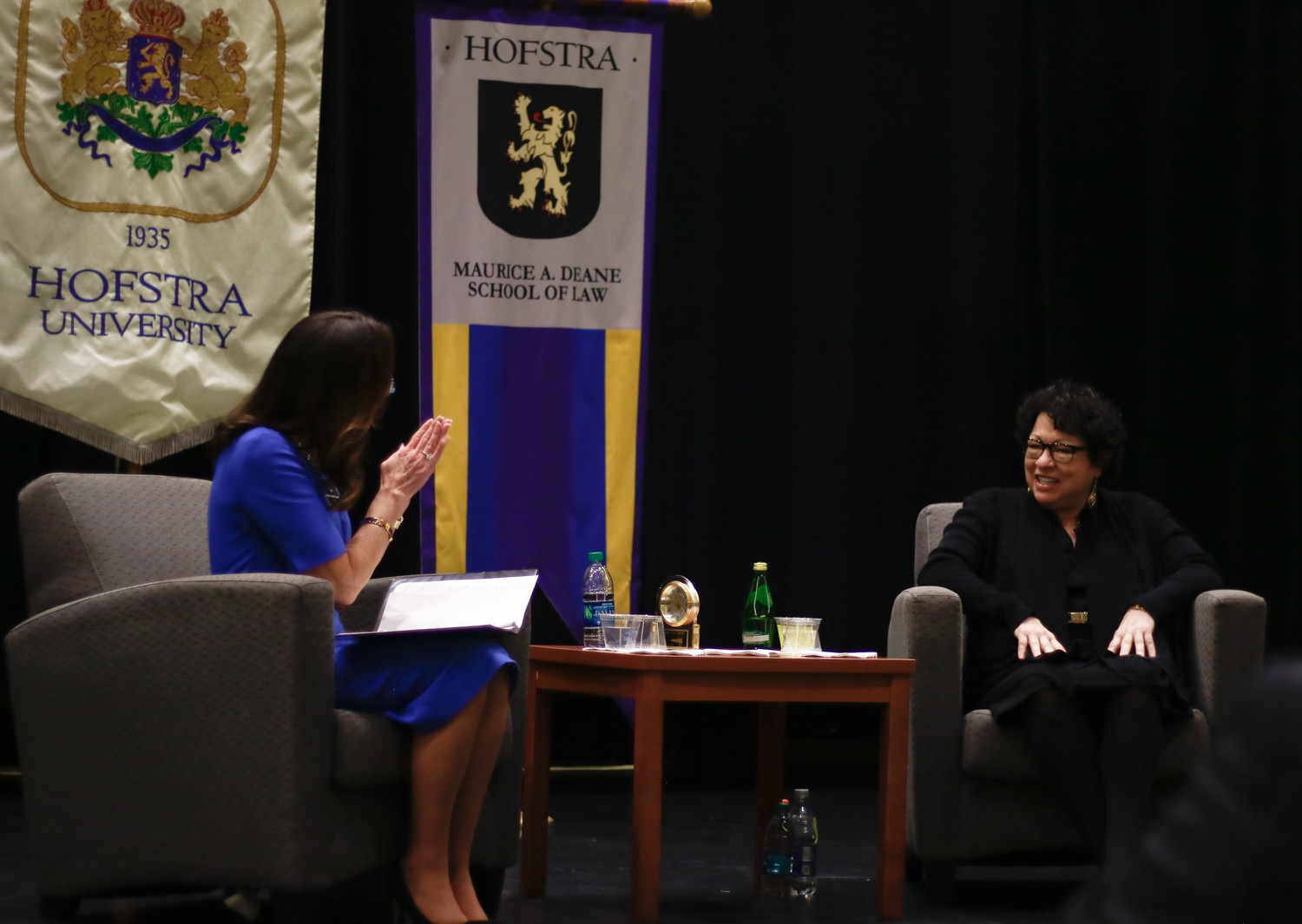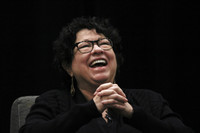Sonia Sotomayor: ‘You can’t give up who you are’
Students in gray-and-black suits, carrying briefcases and backpacks, filled Hofstra University’s Helene Fortunoff Theater at the Monroe Lecture Center in Hempstead last week, eagerly awaiting Sonia Sotomayor’s arrival.
The U.S. Supreme Court associate justice and Bronx native’s appearance sparked interest among students at the Maurice A. Deane School of Law on Long Island. As Sotomayor, 63, walked across the stage to nestle in an armchair opposite Hofstra Law’s dean, Judge A. Gail Prudenti, students prepped their notepads.
“What time do you want this to end,” Prudenti asked, “so you can get home to watch the Yankee game?”
“No later than 8 o’clock,” Sotomayor said with a laugh.
Sotomayor, who grew up in the shadow of Yankee Stadium, had visited Queens College earlier that day to celebrate its 80th anniversary. In her opening remarks at Hofstra, Sotomayor shared how her nomination by President Obama in 2009 as the first Hispanic Supreme Court justice in U.S. history allowed both her Puerto Rican heritage — along with her “unique background” — to become widely known.
She grew up in the South Bronx as one of the children of Juan and Celina Baez Sotomayor. Her mother was a nurse, her father a factory worker.
She spoke Spanish, as her family lived near Puerto Rican communities. When she was 9, her father died, and soon after, she became fluent in English.
“My mother stressed the value of education,” Sotomayor said.
After a brief introduction, Prudenti asked Sotomayor questions submitted by students. She answered them slowly, giving detailed answers. Students jotted down notes and nodded.
Some of them, chosen by a lottery, were able to query her directly. One of them was second-year law student Danielle Leavy, who asked Sotomayor how she kept herself grounded, and how she knew when to ask for help. Sotomayor stood and walked up the hall steps to greet her in the audience, shaking other students’ hands as well.
“My friends keep me going,” Sotomayor confessed. “My family were not talkers about our emotions. I was stubborn and independent. Learning how to deal with my own emotional health was important.”
In her book “My Beloved World,” Sotomayor details emotional passages of her dissolved marriage, her Type 1 diabetic diagnosis when she was 8, and the death of her father. Emotions, she said, often peek through her decision-making.
“You can’t do human activity without having human emotions,” Sotomayor said.
“Judging is a human activity. But the sense of how you deal with it is to acknowledge it. I look at it and examine it to try to figure out the effect it’s having. And then I adjust my behavior in accordance.”
Sotomayor insisted students walk away with one message: “You can’t give up who you are,” she said. “I embraced who I am. I come from a very — and trust me when I say ‘very’ — unique background. You may have self-doubt. But sometimes, good enough is good enough.
“And you can do a lot with good enough.”











